Capturing the essence of the vast ocean and its majestic boats has long been a source of wonder and inspiration for photographers. Whether you’re drawn to the crashing waves, the serene calm of a sunset over the horizon, or the intricate details of a vessel navigating the open sea, ocean and boat photography offers a unique perspective on the world around us. From the towering masts of a historic sailing ship to the sleek lines of a modern yacht, the interplay between land, sea, and sky creates a dynamic canvas for creativity. But mastering this art form requires more than just a camera and a tripod—it demands a blend of technical skill, artistic vision, and a deep appreciation for the natural beauty of the ocean and its surroundings. In this guide, we’ll explore the tips, tricks, and techniques needed to transform your ocean and boat photos into stunning works of art, ensuring your captures do justice to the grandeur of the open sea.
Key Takeaways
– Capture the magic of golden hour for soft, dramatic lighting in ocean and boat photos.
– Use the rule of thirds and leading lines to create balanced, engaging compositions.
– Experiment with creative angles like aerial views, low angles, and close-ups for unique perspectives.
– Tell stories through your photos by focusing on the boat’s movement, history, or the surrounding environment.
– Enhance your photos with post-processing techniques to boost mood, clarity, and detail.
– Explore hidden gems and seasonal variations to find unique, dynamic shots.
– Push boundaries by trying nighttime photography and innovative techniques like long exposures.

How to Capture the Essence of the Ocean and Boats Through Photography
Capturing the essence of the ocean and boats in stunning photography requires a blend of creativity, technical skill, and a deep appreciation for the subject matter. Here are some expert tips to help you get started:
1. Lighting
- Golden Hour:** The best times to photograph boats and the ocean are during the golden hour, either at sunrise or sunset. This soft, diffused light creates beautiful hues and long shadows that enhance the textures of the boat and water.
- Shadows and Reflections:** Look for opportunities where sunlight casts dramatic shadows or reflects off the water. This can add depth and dimension to your shots, making them more visually striking.
- Clouds:** Cloud formations can add drama to your photos. Try to capture clouds that contrast beautifully with the boats or the horizon, creating a sense of scale and grandeur.
2. Composition
- Rule of Thirds:** Use the rule of thirds to frame your shots. Position the boat or your vantage point so that it leads the viewer’s eye towards the horizon or a distant point of interest.
- Focal Point:** Identify a strong focal point, whether it’s the boat, the waves, or the sky. Ensure this element is balanced within the frame to create a harmonious composition.
- Leading Lines:** Utilize leading lines, such as the mast of a sailboat or the path of waves, to guide the viewer’s gaze and add movement to your photo.
3. Creative Angles
- Aerial Views:** Get a unique perspective by shooting from a height, such as the deck of a tall ship or a cliff overlooking the ocean. This can give your photos a broader, more immersive feel.
- Low Angle Shots:** Capture the boat or ocean from a low angle to emphasize its size and dominate the frame. This works particularly well when the boat is fully rigged or moving through the water.
- Close-Ups:** Don’t forget to zoom in on details like the texture of the wood, the reflection in the water, or the intricate patterns in the waves. These close-ups can reveal the subtle beauty of the ocean and boats.
4. Storytelling Through Photography
- Tell a Story:** Consider the narrative behind your shot. Is the boat in motion, or is it stationary? Are there people on board, or is it just the boat itself? Capturing the story behind the image can make your photos more engaging.
- Emotional Connection:** Aim to evoke emotions through your photos. A boat weathering a storm or a calm sea at dawn can stir feelings of adventure, peace, or nostalgia in the viewer.
5. Post-Processing
- Edit for Mood:** Adjust colors and tones to enhance the atmosphere of your photos. For example, warm tones can convey warmth and comfort, while cool tones can create a sense of mystery or serenity.
- Sharpness and Clarity:** Ensure your photos are sharp and clear, especially when it comes to details like the rigging of a boat or the texture of the water. Blur unwanted elements to keep the focus on your main subject.
- Black and White Conversion:** Sometimes, converting color photos to black and white can draw attention to shapes, textures, and forms, giving your photos a timeless quality.
6. Explore Different Locations
- Discover Hidden Gems:** Don’t limit yourself to popular spots. Explore lesser-known beaches, harbors, or coastal towns where the boat and ocean interact in unique ways.
- Seasonal Changes:** The ocean and boats look different in various seasons. Try capturing them during spring blooms, autumn foliage, or winter storms for diverse and dynamic shots.
- Nighttime Photography:** Experiment with nighttime photography to see how boats and the ocean transform under moonlight or starry skies. This can add a magical touch to your photos.
7. Stay Curious and Experiment
- Experiment with Techniques:** Try different photography techniques, such as long exposures for smooth water effects or panning for capturing motion blur.
- Learn from Others:** Look at the work of other photographers who specialize in boat and ocean photography. Their portfolios can inspire new ideas and approaches for your own work.
- Keep Exploring:** The ocean is vast and ever-changing. Keep exploring new locations, subjects, and lighting conditions to continually grow your skills and portfolio.
By combining these tips with your own creativity, you can capture the essence of the ocean and boats in stunning photographs that truly resonate with viewers. Remember to always shoot with passion and let your unique perspective shine through in every frame!
How Can You Take Stunning Photos of the Ocean and Boats?
To capture stunning photos of the ocean and boats, consider the following expert tips and strategies:
- Choose the Right Equipment
- Use a high-quality camera with a wide-angle lens to capture the vastness of the ocean.
- Opt for a tripod for stability, especially when shooting from a boat.
- Consider underwater cameras for unique perspectives of marine life.
- Master Camera Settings
- Set your aperture to f/8 or higher to increase depth of field, ensuring sharp focus across the frame.
- Adjust your ISO settings to handle low-light conditions, common during sunrise or sunset.
- Experiment with shutter speeds to freeze motion, such as waves or moving boats.
- Composition Techniques
- Utilize leading lines (like ropes or masts of boats) to guide the viewer’s eye through the frame.
- Apply the rule of thirds to create balanced compositions.
- Capture reflections off water surfaces for added depth and color.
- Timing and Lighting
- Shoot during the golden hour (sunset or sunrise) for soft, warm lighting.
- Explore the blue hour (before sunrise) for dramatic sky colors.
- Avoid midday sun, which can wash out details on boats and the ocean.
- Focus on the Subject
- Pay attention to the boat’s shape and movement, especially when it’s under sail.
- Frame shots to emphasize the boat’s relationship with the ocean environment.
- Try low-angle shots to give your photos a more dynamic perspective.
- Post-Processing
- Edit your photos using software like Adobe Lightroom or GIMP to enhance colors and contrast.
- Remove unwanted objects or people from the frame using cloning tools.
- Add subtle vignettes or deconstruct the image to highlight the boat or ocean’s features.
- Explore Unique Angles
- Get a bird’s-eye view by flying a drone (if permitted) or climbing a tall mast.
- Capture the ocean’s surface tension after a wave crash or water droplets on a boat’s rigging.
- Join Communities and Resources
- Visit Sailing Photo Awards to explore galleries and learn from professional photographers.
- Follow sailing photography blogs and forums for inspiration and tips.
By combining these techniques, you can create captivating ocean and boat photos that stand out and tell a story.
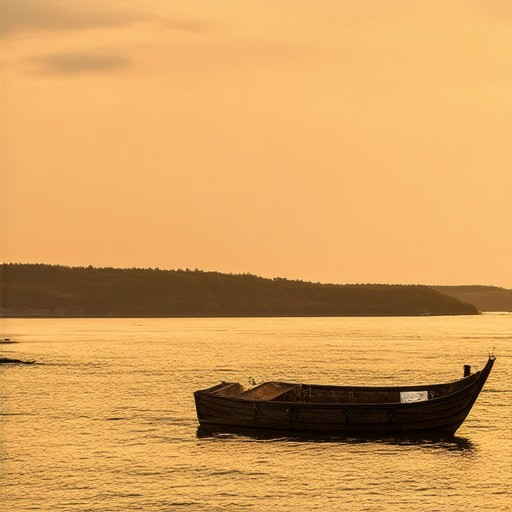
Capturing the Beauty of the Ocean and Boats in Your Photos
To effectively capture the essence of the ocean and boats in your photographs, consider the following techniques and strategies:
- Lighting :
- Optimal lighting enhances the visual appeal of your photos. Consider shooting during the golden hours (sunset or sunrise) to utilize soft, diffused light that brings out the natural colors of the ocean and boats. Experiment with different times of the day to find the most favorable lighting conditions for your subjects.
- Composition :
- Utilize leading lines and symmetry to create visually balanced images. Boats often provide strong leading lines, especially when they head towards the horizon. Aligning your boat with the background can create a sense of balance and harmony in your composition.
- Timing :
- Capture the boat in motion to add dynamism to your photos. Look for moments when the boat is silhouetted against the sky during sunset or when it’s surrounded by a dramatic sky. Timing your shots according to tidal schedules or boat movements can help you anticipate the best moments.
- Technical Settings :
- Use a tripod to stabilize your camera, especially for long exposures, to prevent blurriness caused by ocean movement. Adjust your aperture and ISO settings to control depth of field and reduce noise, experimenting to find the optimal balance for each shot.
- Color Correction :
- Enhance the vibrancy of your photos using filters or editing software. Adjust the hues subtly to make the ocean appear more vivid without altering the natural tones. Overdo it, and the result may look artificial.
- Detail and Interest :
- Incorporate details like crashing waves, reflections, and boat features such as masts or sails into your frames. Capture the boat’s wake as it cuts through the water for a dynamic effect, ensuring the foreground doesn’t overshadow the main subject.
- Patience and Observation :
- Stay patient and observant to wait for the perfect moment to press the shutter. Sometimes, the most remarkable shots occur spontaneously when you’re simply enjoying the surroundings.
- Boat Type :
- Choose a boat that complements your aesthetic. A sailboat with colorful sails against a cloudy sky or a fishing boat offering rustic charm can each provide unique and visually striking subjects.
- Editing :
- Refine your photos post-processing. Use editing tools to enhance colors, sharpness, and overall mood. Consider taking workshops or tutorials to improve your editing skills and bring out the best in your ocean and boat photos.
By thoughtfully applying these strategies, you can create captivating photos that truly reflect the beauty of the ocean and boats.
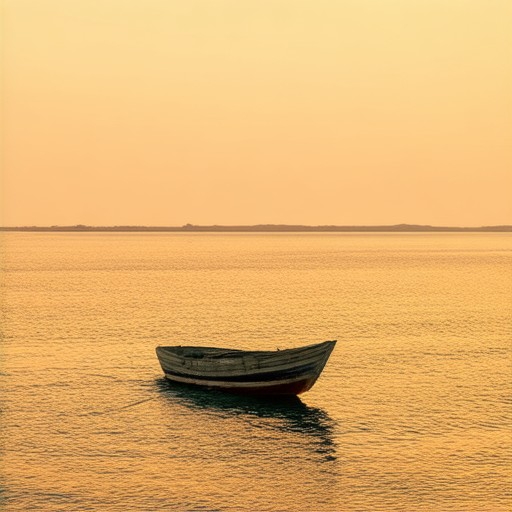
How to Capture the Essence of the Ocean and Boats Through Photography
Capturing the essence of the ocean and boats in stunning photography requires a blend of creativity, technical skill, and a deep appreciation for the subject matter. Here are some expert tips to help you get started:
1. Lighting
- Golden Hour:** The best times to photograph boats and the ocean are during the golden hour, either at sunrise or sunset. This soft, diffused light creates beautiful hues and long shadows that enhance the textures of the boat and water.
- Shadows and Reflections:** Look for opportunities where sunlight casts dramatic shadows or reflects off the water. This can add depth and dimension to your shots, making them more visually striking.
- Clouds:** Cloud formations can add drama to your photos. Try to capture clouds that contrast beautifully with the boats or the horizon, creating a sense of scale and grandeur.
2. Composition
- Rule of Thirds:** Use the rule of thirds to frame your shots. Position the boat or your vantage point so that it leads the viewer’s eye towards the horizon or a distant point of interest.
- Focal Point:** Identify a strong focal point, whether it’s the boat, the waves, or the sky. Ensure this element is balanced within the frame to create a harmonious composition.
- Leading Lines:** Utilize leading lines, such as the mast of a sailboat or the path of waves, to guide the viewer’s gaze and add movement to your photo.
3. Creative Angles
- Aerial Views:** Get a unique perspective by shooting from a height, such as the deck of a tall ship or a cliff overlooking the ocean. This can give your photos a broader, more immersive feel.
- Low Angle Shots:** Capture the boat or ocean from a low angle to emphasize its size and dominate the frame. This works particularly well when the boat is fully rigged or moving through the water.
- Close-Ups:** Don’t forget to zoom in on details like the texture of the wood, the reflection in the water, or the intricate patterns in the waves. These close-ups can reveal the subtle beauty of the ocean and boats.
4. Storytelling Through Photography
- Tell a Story:** Consider the narrative behind your shot. Is the boat in motion, or is it stationary? Are there people on board, or is it just the boat itself? Capturing the story behind the image can make your photos more engaging.
- Emotional Connection:** Aim to evoke emotions through your photos. A boat weathering a storm or a calm sea at dawn can stir feelings of adventure, peace, or nostalgia in the viewer.
5. Post-Processing
- Edit for Mood:** Adjust colors and tones to enhance the atmosphere of your photos. For example, warm tones can convey warmth and comfort, while cool tones can create a sense of mystery or serenity.
- Sharpness and Clarity:** Ensure your photos are sharp and clear, especially when it comes to details like the rigging of a boat or the texture of the water. Blur unwanted elements to keep the focus on your main subject.
- Black and White Conversion:** Sometimes, converting color photos to black and white can draw attention to shapes, textures, and forms, giving your photos a timeless quality.
6. Explore Different Locations
- Discover Hidden Gems:** Don’t limit yourself to popular spots. Explore lesser-known beaches, harbors, or coastal towns where the boat and ocean interact in unique ways.
- Seasonal Changes:** The ocean and boats look different in various seasons. Try capturing them during spring blooms, autumn foliage, or winter storms for diverse and dynamic shots.
- Nighttime Photography:** Experiment with nighttime photography to see how boats and the ocean transform under moonlight or starry skies. This can add a magical touch to your photos.
7. Stay Curious and Experiment
- Experiment with Techniques:** Try different photography techniques, such as long exposures for smooth water effects or panning for capturing motion blur.
- Learn from Others:** Look at the work of other photographers who specialize in boat and ocean photography. Their portfolios can inspire new ideas and approaches for your own work.
- Keep Exploring:** The ocean is vast and ever-changing. Keep exploring new locations, subjects, and lighting conditions to continually grow your skills and portfolio.
By combining these tips with your own creativity, you can capture the essence of the ocean and boats in stunning photographs that truly resonate with viewers. Remember to always shoot with passion and let your unique perspective shine through in every frame!
How Can You Take Stunning Photos of the Ocean and Boats?
To capture stunning photos of the ocean and boats, consider the following expert tips and strategies:
- Choose the Right Equipment
- Use a high-quality camera with a wide-angle lens to capture the vastness of the ocean.
- Opt for a tripod for stability, especially when shooting from a boat.
- Consider underwater cameras for unique perspectives of marine life.
- Master Camera Settings
- Set your aperture to f/8 or higher to increase depth of field, ensuring sharp focus across the frame.
- Adjust your ISO settings to handle low-light conditions, common during sunrise or sunset.
- Experiment with shutter speeds to freeze motion, such as waves or moving boats.
- Composition Techniques
- Utilize leading lines (like ropes or masts of boats) to guide the viewer’s eye through the frame.
- Apply the rule of thirds to create balanced compositions.
- Capture reflections off water surfaces for added depth and color.
- Timing and Lighting
- Shoot during the golden hour (sunset or sunrise) for soft, warm lighting.
- Explore the blue hour (before sunrise) for dramatic sky colors.
- Avoid midday sun, which can wash out details on boats and the ocean.
- Focus on the Subject
- Pay attention to the boat’s shape and movement, especially when it’s under sail.
- Frame shots to emphasize the boat’s relationship with the ocean environment.
- Try low-angle shots to give your photos a more dynamic perspective.
- Post-Processing
- Edit your photos using software like Adobe Lightroom or GIMP to enhance colors and contrast.
- Remove unwanted objects or people from the frame using cloning tools.
- Add subtle vignettes or deconstruct the image to highlight the boat or ocean’s features.
- Explore Unique Angles
- Get a bird’s-eye view by flying a drone (if permitted) or climbing a tall mast.
- Capture the ocean’s surface tension after a wave crash or water droplets on a boat’s rigging.
- Join Communities and Resources
- Visit Sailing Photo Awards to explore galleries and learn from professional photographers.
- Follow sailing photography blogs and forums for inspiration and tips.
By combining these techniques, you can create captivating ocean and boat photos that stand out and tell a story.
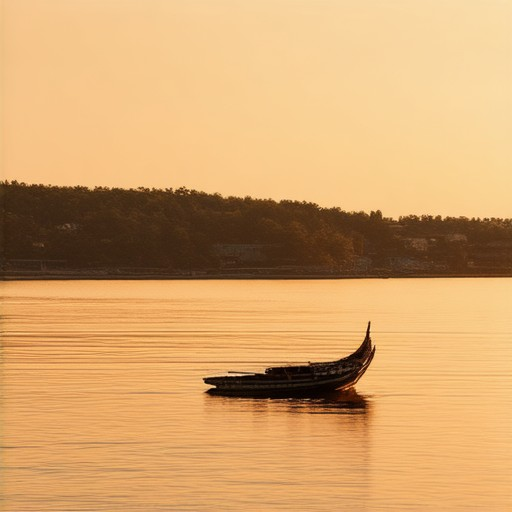
How Can You Capture the Beauty of the Ocean and Boats in Your Photos?
To effectively capture the essence of the ocean and boats in your photographs, consider the following structured approach:
- Choose the Right Location : Look for coastal areas with dramatic backgrounds, such as cliffs, lighthouses, or sunset views, to enhance the scene’s atmosphere. Consider visiting locations like the Sailing Photo Awards gallery for inspiration.
- Timing is Key : Capture the golden hour, either sunrise or sunset, when the light is soft and creates long shadows, adding depth and warmth to your shots. This is often referred to as the “magic hour” in photography.
- Composition Techniques : Utilize leading lines, such as the horizon or boat masts, to guide the viewer’s eye through the frame. Experiment with symmetry, perspective, and framing to highlight the subject while leaving room for the vastness of the ocean.
- Lighting Strategies : Pay attention to the direction and quality of light. Backlighting can create dramatic silhouettes, while frontlighting enhances textures. Use diffused light during midday for balanced exposures.
- Color Palette : Capture the vibrant blues and greens of the ocean, complemented by the white sails of boats. Post-processing tools can help adjust colors and tones to match the mood of the scene.
- Editing and Post-Processing : Adjust exposure, contrast, and saturation to bring out details in the water and boats. Remove unwanted distractions and convert to black and white for a classic maritime feel.
- Community and Resources : Explore resources from platforms like Sailing Photo Awards for tips and inspiration. Engage with fellow photographers and share your work to refine your technique.
By combining these elements, you can create photos that truly reflect the beauty and grandeur of the ocean and its vessels. For more advanced tips and galleries, visit Sailing Photo Awards .
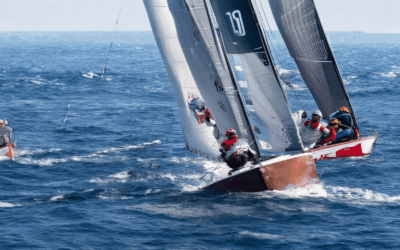
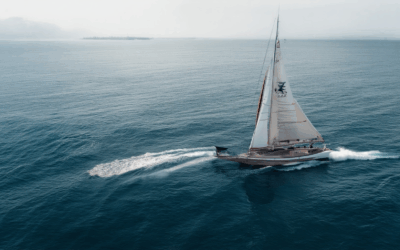
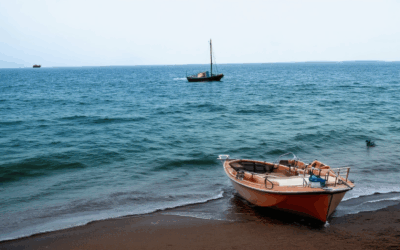
0 Comments